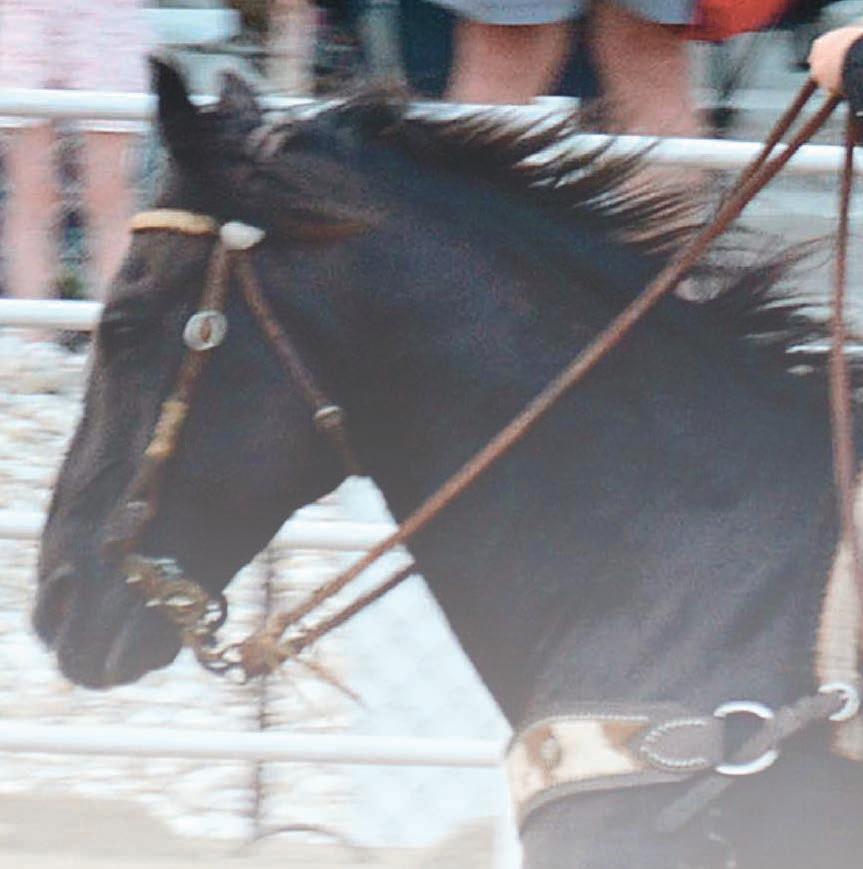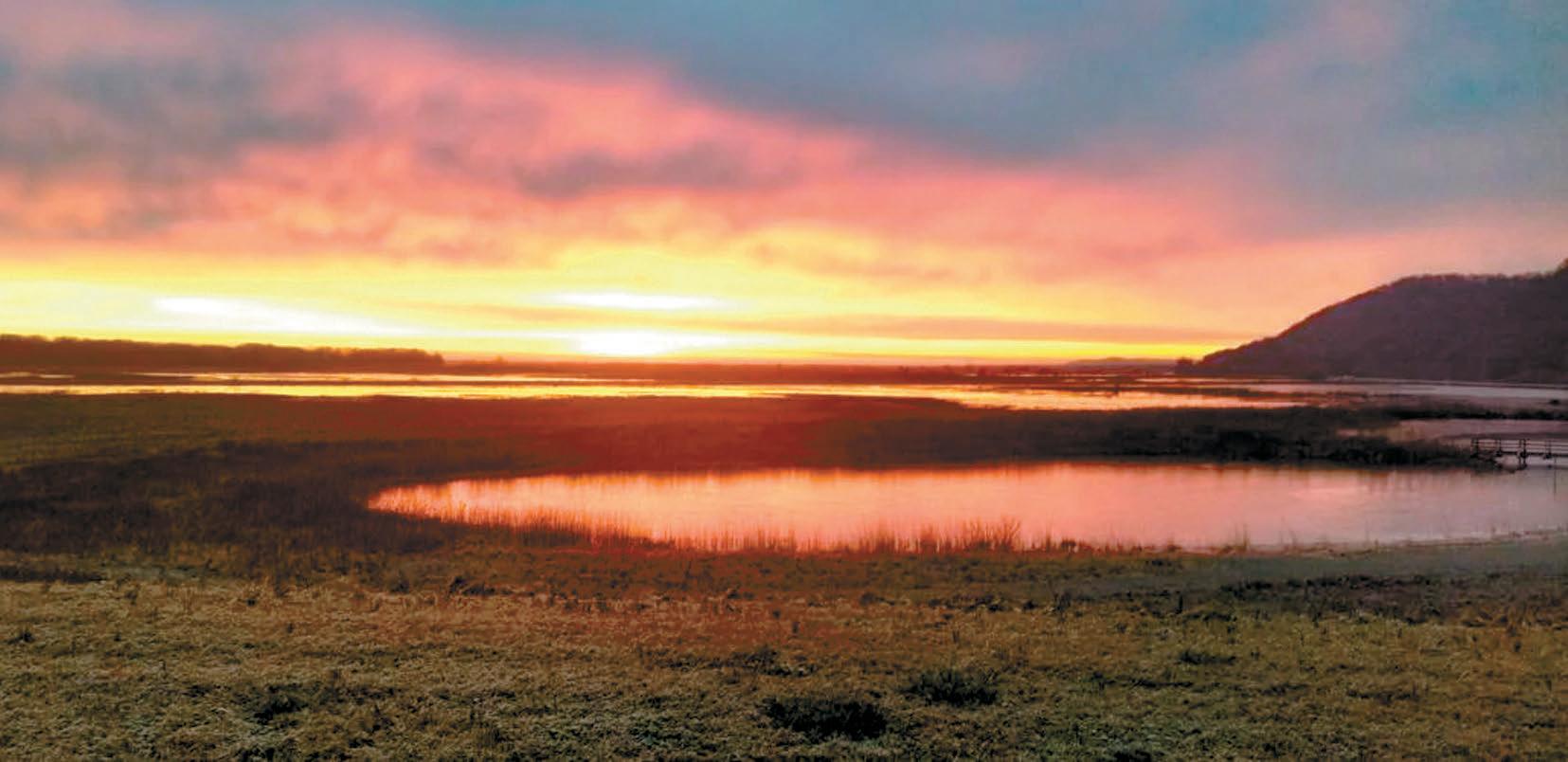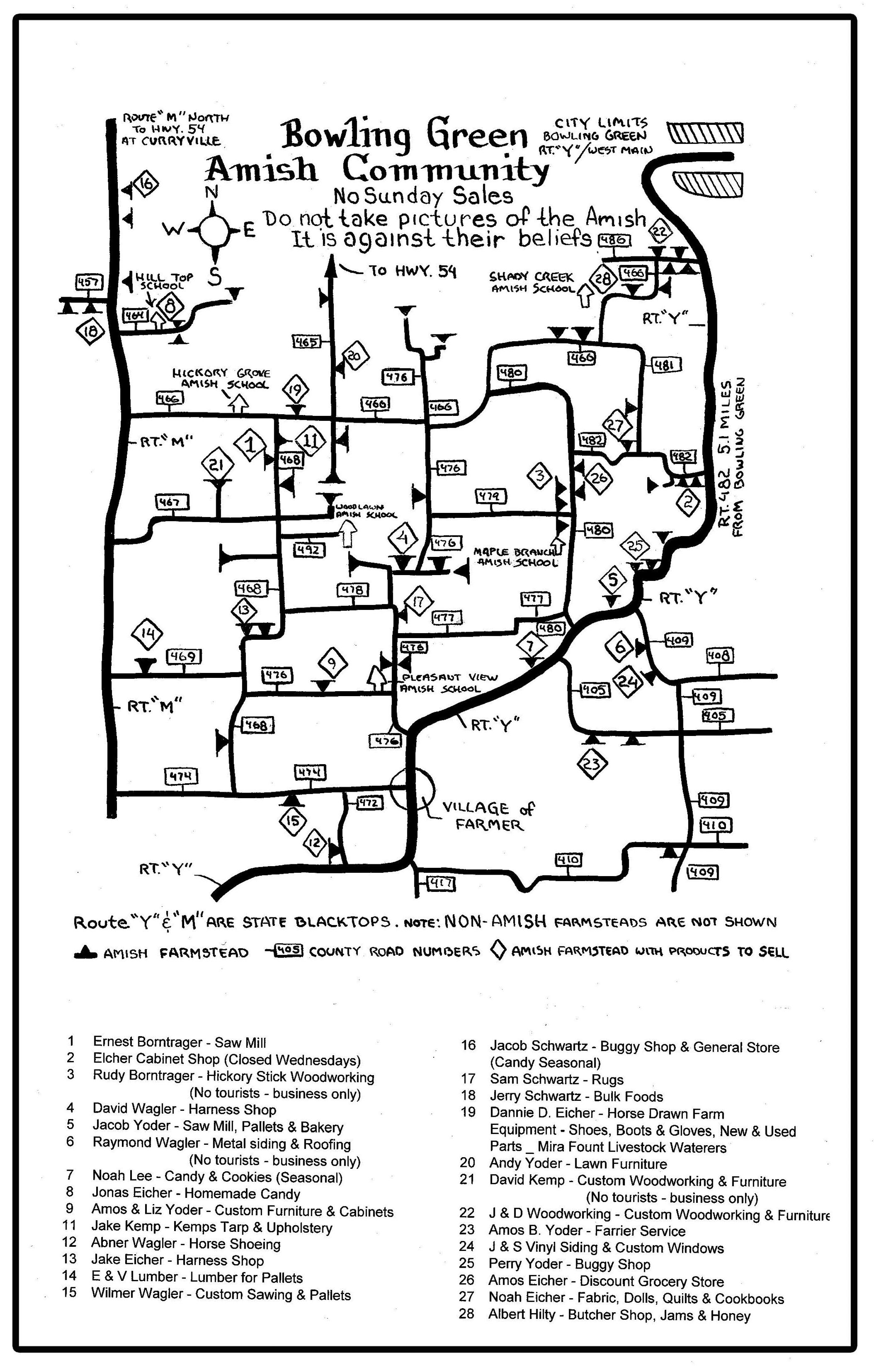






Welcome, Piker. Not familiar with the term? Well, let us explain.





The moniker has a rich and distinguished history. And although many tried to corrupt it, the definition still embodies the ideals of hard work and strong dispositions common to the pioneers who settled here and handed down those traits.
The word was coined during the Gold Rush of the late 1840s. While specifically referring to someone from Pike County, it was a label also used to describe all who bravely sought a better life.
“The Piker is to be found everywhere on earth—with perhaps enough exceptions to prove the rule,” according to writer E.E. Campbell.
“For more than 100 years the sons of Pike County have spread its fame throughout the nation,” Floyd C. Shoemaker of the State Historical Society of Missouri wrote in July 1958.




References abound in literature and culture, perhaps nowhere more prominent than in the tunes “Sweet Betsy From Pike” and “Joe Bowers.” Mark Twain even gets in on the fun in chapter 20 of “The Adventures of Huckleberry Finn.”
“My folks was living in Pike Coun-






ty, in Missouri, where I was born, and they all died off but me and pa and my brother, Ike,” Huck says to The King and The Duke.

Natives were here first, of course.
The Sac and Fox tribes called this region “The Land of the Golden Hills” for its beautiful, rolling ridges. The bluff in Clarksville—the highest point on the Mississippi River—is sacred to the tribes.
White people began arriving in the late 1700s. Soon, many from Southern states such as Kentucky, Tennessee,

the Carolinas and Virginia flooded in. They migrated hundreds of miles in wagons and on keelboats to an untamed wilderness that offered much more danger and toil than adventure and convenience. For the most part, they weren’t fleeing persecution, famine or tribulation. Instead, they saw opportunity in what seemed a boundless frontier.

In the early 1800s, the nation was adding immense territory to its borders and would soon win lasting independence from England. Ahead were new struggles and old disputes that would shape decisions and destinies.
As the War of 1812 drew to a close, a Kentucky native was preparing to move to Pike County. In 1816, apple scions were brought by James Hart Stark, who would be the first executive of a nursery that would bear his name and would
become known the world over.
The Missouri Territorial Legislature carved Pike County out of St. Charles County in 1818. As originally organized, it featured what would become nine full counties and parts of six others that at the time extended to the Iowa border and across most of Central Missouri.
The county was named for Zebulon Montgomery Pike, the first American explorer of the Upper Mississippi.
“The early settlers … were intellectually and morally the equals of any class of men that have ever planted human habitation within the domain of state or territory upon this western continent,” records “The History of Pike County, Missouri” from 1883.
Noble tales were few, however, and there was nothing romantic about what could only be described as a meager subsistence.
Settlers struggled immensely. Native tribes that had once made war on each other were forced to fight for, and eventually lose, the land they loved. The unpaid labor of slaves would enrich “owners” for decades.
Pike County would eventually become one of the largest slave-holding parts of Missouri, which itself would come into official existence in 1821 amid battles over human bondage.
The Civil War would pit Pike County family against Pike County family, with allegiances being about evenly split between North and South.
Many men made, and lost, fortunes or their lives in the fighting. Some women,
such as Confederate spy Fannie McQuie Senteny of Louisiana, also got involved.
Toward the end of the war, Republican legislator John Brooks Henderson of Louisiana would draft and introduce a Constitutional amendment freeing the slaves.
A bust bearing Henderson’s likeness can be found in Louisiana’s Henderson Riverview Park, which features an outstanding view of the Mississippi and beyond. And his voice echoes with advice that’s just as applicable today as it was when spoken.
“If you commit errors, or outrage public sentiment, I want no other revolution than the right of the ballot box,” Henderson said. “With the Constitution unimpaired, we may yet appeal to the popular heart for the approval of right and the redress of wrong.”
The frontier of the 1800s wasn’t all bad. There was an abundance of spring water in Pike County. In the absence of coffee or tea with which to use it, locals made whiskey that was “pure and
unadulterated,” the history book says. And they “did not confine their drinking to house-raisings or log-rollings, but regarded whisky as a household necessity” in an era before water sanitation systems.
“Even at the close of religious services, it was the custom for the good brother at whose home the preaching occurred to pass around something to drink, and it would have been considered, in some places, very impolite not to ask the minister to ‘take a horn,’” the author relayed. “I say horn not for the sake of indulging in slang, but because a historian must observe what are termed the ‘unities of time and place.’ The reader may not be aware that at this time there were no glasses and, as a substitute, horns were used for drinking purposes. It was, therefore, no slang at this time to say ‘Will you take a horn?’”
Pike, Stark and Henderson were far
from the only famous names connected with the shoe-shaped area.
Champ Clark, a Bowling Green lawyer who had arrived in Pike with pennies in his pocket, came within an eyelash of winning the Democratic presidential nomination in 1912. Even in defeat, he remained steadfast.
“I never scratched a Democratic ticket or bolted a Democratic candidate in my life,” Clark famously said. “I shall not change the Democratic habit now. I am too seasoned a soldier not to accept cheerfully the fortunes of war.”
Clark’s home, Honey Shuck, on the appropriately named Champ Clark Drive, is still available for tours.

Another Piker who served in Congress, Republican David Patterson Dyer of Louisiana, offered advice to anyone who would cross a local.
“We men of Pike County fight among ourselves and at election time we pull each other’s hair, but let a stranger attempt to take advantage of the opening and he will find arrayed against him a solid phalanx of Pikers that no power
on earth can asunder,” Dyer said.
Two sitting presidents have visited—Republican Theodore Roosevelt in 1903 and Democrat Jimmy Carter in 1979. Democrat Edward Long of rural Eolia served in the U.S. Senate from 1960 to 1968.
Two local men, both Democrats, have been Missouri governor. Elliott Major of Bowling Green was in office from 1913 to 1917. Lloyd Stark of Louisiana, a descendant of orchard owner James Stark, served from 1937 to 1941. Bowling Green-born Robert Alexander Campbell was Missouri lieutenant governor from 1881 to 1885.
Thomas James Clark Fagg was a justice on the Missouri Supreme Court from 1866 to 1868. An inspiring freedom of speech case involving Father John Cummings went all the way to the U.S. Su-
preme Court. The Catholic Church he served, St. Joseph, in Louisiana, still holds services.
Cleland Boyd McAfee of Ashley was a minister and hymn writer best known for composing “Near to the Heart of God.” James Shields, who was born a slave near Eolia in 1850, was a nationally recognized theologian.
Louisiana seamstress May Birkhead was aboard Carpathia when Titanic hit an iceberg and sank in 1912. With no journalistic experience, Birkhead scooped reporters by chronicling the stories of survivors.
On the lighter side, Louisiana attracted worldwide attention in 1972, when a Bigfoot-like creature that got the nickname “Mo Mo the Missouri Monster” was spotted. It seemed that for everyone who did not buy the tale there was at least one person
who believed. In any event, the beast was never caught.
Actors and musicians who have called Pike County home abound.

Louisiana native Claude Gillingwater was an actor who helped found the Academy Awards. Shunned in much of America for being black, violinist Eddie South of Louisiana found a successful jazz career in Europe.
Virginia Kirtley of Bowling Green made almost 70 films with big stars such as Charlie Chaplin. The Louisiana husband-and-wife team of Cam and Gloria Hardin not only made movies, but also left a scholarship legacy that’s still benefitting local high school students.
Anyone who’s used a road atlas can thank a man from Louisiana. In an era before interstates and Mapquest, George Clason was the king of cartography. He produced what is considered the first functional road atlas.
Professional basketball coach Cotton Fitzsimmons grew up in Bowling Green, and a photo of him still stands outside the gym at the high school. Fitzsimmons exemplified the spirit of a Piker.
“I was a guy who wasn’t supposed to be a player,” he once told “Fastbreak,” the Phoenix Suns’ magazine. “I was too small. If you’re going to be small and you’re going to be a player, you’ve got to be good. You have to work harder than everybody else and you have to be more determined. You can never give in whatsoever. NOBODY could tell me I was too small.”
Fitzsimmons always made a point of acknowledging his roots.
So, he certainly would have agreed with another Piker who held the county in high regard. Dr. T. Berry Smith was an educator and a president of Central College, now known as Central Methodist University.
At the 1898 Pikers Annual Meeting in Louisiana, Smith offered the following.
Read it with pride, for the moment you set foot inside Pike County, you became a Piker.
“I was born in old Pike County.
and I think there’s nothing like her; Tho I’ve strayed beyond her border, yet at heart I’m a still a Piker.
As a fellow loves his sweetheart ‘cause he cannot help but like her.
So, a fellow loves Pike County, if he’s ever been a Piker.
Sister, sweetheart, wife or mother o this world has nothing like her
If you ever see a Pikess, you will want to be a Piker.
Eastward, westward, northward, southward, upward, down want nothing like her!
Pike’s the center of creation in the eyes of every Piker.
All her dead in - well, no matter still believe there’s nothing like her.
When old Gabriel toots his trumpet every Piker’ll be a Piker.”
Greetings from Pike County’s Missouri Commission and the elected officials of this great county.
Pike County has a diverse landscape, of prairies with rich soil, rolling hills, and river bottoms of the Salt and Mississippi rivers.

The people here are just as diverse.
They proudly proclaim, “I’m a Piker,” a moniker derived from the county’s history dating back to the Gold Rush days. It holds true today, contributing to each line of their endeavors—farming, construction, manufacturing, healthcare, and many other forms of employment.
Each person and family is a spoke in the wheel working for the county’s future. The towns and communities in
this county have a tradition of pride and community togetherness that truly exemplifies what built this county, state and nation.
When visiting Pike County, take the time to enjoy the towns, the landscapes and the people. Pike County has a lot for you to experience and create many memories to cherish for a lifetime. Working together, using the talents unique to each of us, we can build a future in Pike County we will all be proud of.

Welcome, on behalf of the Pike County Commission: Bill Allen, Tom Wallace, and Brock Bailey. God Bless each and every one of you.

As mayor, I would love to extend to you a warm, sincere, and hearty welcome on behalf of our citizens, businesses, and services. Whether you’re a tourist, a potential resident, business person or a virtual visitor, we invite you to explore the exciting possibilities of life in Bowling Green.

If you are an outdoor type person/family, you will love our lakes, boating, fishing, hunting, camping, 4-wheeling-side-bysides, and trails.
Bowling Green has a rich and historical heritage with quiet, country atmosphere places for reflection and peace, such as our Cancer Memorial Park, our Champ Clark Honey Shuck House, which is listed on the National Register, our Pike County Genealogy Society and Museum, out Blue Star Memorial marker, the Basye family cabin, (John W. Basye founded Bowling Green), our historical County Court House, where our War Memorials reside and our public library.
Bowling Green offers a wide assortment of businesses with a strong financial district, a Municipal Airport, a variety of restaurants from mom and pop establishments to franchises, retail shops, home decorating, ladies’ boutiques, and car dealerships.

Family summer programs range from boys and girls of all ages little leagues, batting cages, soccer in the late summer and fall and basketball throughout the winter months.
Our Bowling Green R-I School District has an outstanding reputation with above state scoring standards, a nationally recognized elementary school, excellent special education and “gifted” programs, championship athletic teams and music contest winners, as well as after school clubs—the National Honor Society, the Future Farmers of America, the Future Business Leaders in America, which have state and national recognitions and awards.
Bowling Green has amazingly active non-profit organizations including Lions Club, Rotary, VFW, Bowling Green Chamber of Commerce, Pike County Health Department, Option’s for Women, Anne’s Anchor, Hope Center, and many others.
The Amish community offers another attraction and a view into a simpler way of life. Bowling Green offers many choices of churches and places of worship for various denominations, all of which are active and contribute to our loving, supporting and caring community.
All these elements contribute to the success and enjoyable way of life in Bowling Green and foster a community of involvement, unity, giving, and civic pride.
—Jim Arico, MayorHistory awaits as you enter the oldest city in Pike County, Mo. Incorporated in 1818, Louisiana is a picturesque river town situated along the rolling hills of the Mississippi River. Recognized for its abundance of Victorian homes, Louisiana boasts a historic downtown district that is adorned with approximately 20 larger than life murals along its streets.
Louisiana has a rich history, as it is home to the famous Stark Bros., known as the world’s oldest continuously operating nursery and orchard, which was established more that 200 years ago.

U.S. Sen. John Brooks Henderson, who co-authored the 13th Amendment to the U.S. Constitution, was a Main Street resident who served the city as the first president of the Bank of Louisiana.
A hilltop memorial park featuring a bust of Henderson created by local artist, John Stoeckly, overlooks the vast waters of the Mississippi. Visitors may take advantage of numerous park amenities including the recent addition of a viewing

platform complete with an observation telescope.
On Independence Day each year, onlookers gather at the riverfront to enjoy the annual patriotic fireworks display as lighted boats occupy the river.
In October, visitors travel from far and wide to participate in the annual Colorfest street festival, which entails a weekend-long celebration.
A history steeped in folklore has also drawn national attention to Louisiana, which makes our Louisiana Area Historical Museum located on Georgia Street, a top tourist destination for the area.
Governors and senators have lived here. World famous industry leaders and pioneers have lived here, and our residents believe that our future will only complement our distinguished past.

I welcome you on behalf of the citizens of Louisiana, and we trust that your visit will be one of delightful occasion.
—Tim Carter, Louisiana MayorOn behalf of the citizens of Clarksville, Mo., and as the mayor, I welcome you to our City.


We are 490 ‘Small and Strong’! With great fortitude we have upgraded and rebuilt our Water Plant, including the recent completion of a new $2 million Water Tower, have successfully weathered nine flood events since 2008, and are finally building a fully funded $15 million demountable flood defense system, eliminating the necessity for a sandbag wall each time the water rises.
A 40,000 square foot, unique Antique Center, is located at the southern edge of Clarksville and provides a full day of shopping.
Traveling north into town you will find the Apple Shed, home of the Raintree Arts Council of Pike County and the location from which apples were shipped during the apple orchard days. This building serves as a venue for theater and arts presentations, welcomes vendors during Applefest and is a popular wedding and celebration location. Furniture, candles, leather goods are being made here and retail shopping is available.
Cherry’s Bar & Grill, facing the river on Front Street and River Side Restaurant, on Hwy. 79 heading, will supply your every desire for food and drink. River Front Park with Terracing Steps to “Touch the River,” provides perfect viewing opportunities for eagle watching during Eagle Days and other times of the year.
Lock and Dam No. 24 welcomes you to an educational and exciting overlook and all the above is found wrapped in some of the most extraordinary scenery in the U.S.
The tenacity of Clarksville is alive and well. We hope that you will find your visit worthy of sharing the news of this unhurried, unspoiled, and uncommon place.
 —Jo Anne Smiley, Mayor
—Jo Anne Smiley, Mayor
Lock and Dam No. 24 is a lock and dam located near Clarksville, Missouri around river mile 273.4 on the Upper Mississippi River. The main lock is 110 feet (33.5 m) wide and 600 feet (182.9 m) long with its bottom at an elevation of 430 feet.
The auxiliary lock is not operational. Normal pool elevation behind the dam is 449 feet.
The movable portion of the dam is 1,340 feet (408.4 m) long and consists of 15 submersible, elliptical, tainter gates. A 2,720 feet (829.1 m) submersible earthen dike extends from the movable dam to the Illinois shore. In 2004, the facility was listed in the National Register of Historic Places as Lock and Dam No. 24 Historic District, #04000183 covering 1,027 acres (4.2 km2), 3 buildings, 15 structures, 4 objects.
This 6,705-acre area contains bottomland hardwood timber, open marsh, mixed shrub/scrub/emergent wetlands, row crop, oxbow lakes and

sloughs, old fields, and upland woods. The area consists of 3,827 acres of MDC lands and 2,878 acres of lands managed under a cooperative agreement between the Conservation Department, U.S. Fish and Wildlife Service and U.S. Army Corps of Engineers. Pittman-Robertson funds from the federal excise tax on sporting arms and ammunition were used for 75% of the purchase cost of the original area. The area was acquired in 1970 to 1971. Ted Shanks Conservation Area borders 8.75 miles of Mississippi River frontage, 4.75 miles of the Salt River and 2.25 miles of river bluffs. Zebulon Pike charted the mouth of the Salt River in 1805.
The area was a hunting and battle ground for Sac and Fox Indians from the north and the Osages from the south. The land was granted to Saucier in 1799 and in turn to his son-in-law’s brother, Auguste Chouteau (one of the founders of St. Louis), then to Neree Valle (associated with the founding of Ste. Genevieve). The area contains 35 miles of levees, two pump stations, nine miles of water canals and 45 water control struc-
tures. The area is divided into 19 management units. A concrete boat ramp provides access to the Salt River.
From 1892 through 1932 a dynamite factory on this site provided explosives for lead, zinc and coal mines in the tristate area and nitroglycerin for use in Oklahoma oil fields. Separate facilities were built in different valleys in this rough terrain to lessen the chance of a chain reaction explosion, should any one of the buildings explode.
E.I. DuPont de Nemours and Company donated 1,122.8 acres to the Conservation Commission in 1938. Subsequent land purchases have increased the size of this area to its present 1,320 acres.
The area consists of 975 acres of upland timber, 310 acres of bottomland timber and 35 acres of old fields and grassland. It also contains plantations of walnut, cottonwood, tulip poplar, pine, and bald cypress trees.
A concrete boat ramp and primitive campground are located along a portion
of 1.5 miles of Mississippi River frontage.
DuPont Forest Natural Area is found east of Highway 79. This 80-acre tract is a mixed upland hardwood forest and small limestone glade, lying within the Lincoln Hills Section of the Glaciated Plains Natural Division. Basswood, northern red oak, white oak, chinquapin oak and sugar maple are common overstory trees.
Clarence Cannon NWR was established in 1964 with funds from the purchase of migratory waterfowl stamps. It lies in Pike County, Mo., Pool 25 about one mile east of the small town of Annada, Mo. The Clarence Cannon Refuge—named for Clarence Cannon, a former Missouri congressman—is the headquarters for the Great River NWR.
The area was formerly part of an agricultural levee district, and all but a few hundred acres is encompassed by a
levee. This NWR covering 3,750 acres of Mississippi River floodplain, was established to provide a feeding and resting area for migratory birds.
More than 2,000 acres of this refuge are managed for wetland plant production. In addition to water control, the wetland management units are disced, burned, mowed and cropped to maintain a diversity of plants, which provide excellent forage for migratory shorebirds, marsh birds and waterfowl. More than 400 acres on Clarence Cannon NWR are annually cropped by cooperative farmers. Corn, soybeans, winter wheat and clover are rotated through the crop fields and wetland management units to maintain diversity. The hardwood trees were severely impacted by the prolonged 1993 flooding. Over 80% of the pin oaks and hickories died, but some natural regeneration is occurring. Approximately 450 acres of bottomland forest remains.
Following the 1993 flood, an 800-foot spillway was cut into the Mississippi River levee on the southeast side of the
refuge. The construction allows flood waters to enter the refuge more frequently.
The spillway has provided increased connectivity to the river and temporary floodwater storage, which may help reduce downstream flooding on private lands.

The refuge has many visitors who come to observe more than 200 species of migratory birds, including bald eagles, waterfowl, shorebirds and songbirds. Many birds also nest on the refuge including the king rail (a Missouri state endangered species) and a pair of bald eagles.
A managed deer hunt is conducted Clarence Cannon. Fishing by boat is permitted in Bryant’s Creek along the southern refuge boundary. Portions of the refuge are seasonally closed to public entry based on peak waterfowl migrations.
Cuivre River State Park, located south of Clarence Cannon NWR, offers a variety of outdoor opportunities including hiking and camping.

In 1963, Edward Anderson, a local landowner, donated the original acreage for this area to the Conservation Department. Later, purchases by the Department brought the area to its present size of 1,045 acres. This conservation area was acquired
in part through the Pittman-Robertson Wildlife Restoration Act administered by the U.S. Fish and Wildlife Service.
Several small, intermittent streams traverse the hilly terrain and drain into the Mississippi River. Although the area is bordered by 2.3 miles of Mississippi River, access to the river is limited.


Two large sink holes are located about one-half mile northeast of the
tower site, which is adjacent to Highway 79, about one mile north of Hallows Roadside Park.

The highest point in Ralls County (804 feet) is found on the area.
During your visit to the area, you may view forest improvement practices designed to improve tree growth and wildlife habitat. Any aesthetic disturbance is only temporary.

The area is characterized by narrow valleys with numerous rock overhangs and consists of 1,447 acres of timber, 151 acres of agricultural lands and 233 acres of grasslands and old fields. Peno Creek traverses the northern portion of the area, providing over a mile of stream frontage. The Conservation Department purchased the original 716 acres in 1967 from Roy Ranacker, a local businessman. Additional purchases, partially financed by the Pittman-Robertson excise tax on sporting arms and ammunition have increased the area to its present 1,831 acres. In 1799, Benjamin Spencer established a salt business a few miles west of Frankford. Sauk and Fox Indians threatened Spencer’s safety, and his salt processing works were abandoned after a short period. The salt springs later became known as Spencer Lick. Permanent Euro-American settlements occurred in the vicinity as early as 1816.
The remnants of a Short Line railroad track, constructed in 1872 and abandoned in 1944, can still be seen on the area. Ranacker Conservation Area marks a point where river hills break away from the prairie. In pre-settlement times, the area probably consisted exclusively of woodlands and small prairies. It is now home to a variety of wildlife, including deer, turkey, and bobwhite quail. Management of the area focuses on providing wildlife habitat by maintaining timber edges and old fields, prescribed timber harvest and rotating agricultural crops.













Bowling Green is the oldest Amish settlement in Missouri, founded in 1947. There are a total of 3 church districts and an Amish population of about 400.
The Pike County Amish Community is made up of what is called the “Old Order Amish” or what others may call “The Simple People.”

Those of us who live, work, and socialize with this unique group of people know they are anything but simple.
They are a close-knit community bound together by their beliefs. No different than any other citizen here in Pike County, Mo.
Every aspect of their daily life helps them to reinforce their values of simplicity and their devotion to their religion, family, and community.
This provides for a morally upright,
hardworking, way of life.
The Amish use the same bible as most religions use.
They base their doctrine on the New Testament. Romans 12-2 says, “be not conformed to this world.”
Their way of life to them is the right way to live, although they do not believe in imposing their beliefs upon others.
They image their way of life on the basis of the way Jesus Christ lived while on this earth—peace loving, upright, gentle, kind, living close to the earth and as no nonsense as possible.
They disregard the modern way of life and are content in doing so. No electricity, no phones, no cars, (only horse and buggy), kerosene lamps for light, gasoline, powered machinery to run machinery, such as a sawmill and or washing machine.
They are a “traditional” group of citizens who preserve their traditions
and uphold the values they treasure from the Bible.
This is no different than any other religious people.
Their church services are held in the language of High German, most of them speaking enough High German to get through and recite Bible Scriptures.
They speak amongst themselves in a Pennsylvania Dutch dialect, (another form of High German).

They speak to those “outside” the faith in English.
The tradition of keeping this dialect for generations is their way of staying in touch with their roots.
This is no different than the immigrant traditions of our own ancestors. They believe that a member of the order stays with the faith by choice as well as being baptized by that same choice.
The church dictates the layout of an
Amish Community. Each church district is home to 15-30 families. Each church district is self-governing and each church leader, called a “bishop”, is the elected leader of his own community.
He’s in charge of the religious aspect as well as the personal and mental well-being of his members. Church is held every other Sunday at a member’s home.
The designated home prepares all week for that specific day concentrating mainly on the preparation of the food being served and the cleaning of the home.

Other members also help with the food.
The younger members of the faith use the time after the services for courtship time or “Courting.” The young couple goes out in a buggy, either to town for a visit to the Dairy Queen or a trip to see the river or whatever else might be fun to see and do.
One of the sources of conflict with modern society was the Amish belief regarding education.
To them an eighth-grade education was good enough for any successful Amish person.
After graduating from eighth grade, the boys were given instruction in farming along with some carpentry.
The girls were given instruction in sewing, cooking, canning, cleaning, and gardening.
The Amish felt this was all a person needed to live a successful life. This belief led to trouble with to the national education laws. The law stated no one under the age of 15 could leave school. Most eighth graders were only 14.
In the early 1940s in Jay County and Adams County Indiana the closing of the country schools led to busing to larger schools.
The Amish wanted more say in how their schools were to be run and what was to be taught. They wanted a place where they could live and have their own schools. In the mid 1940’s they struck out to find that place.
Their first stop was Bowling Green, Missouri, after which they continued their trip with stops at Sikeston, Missouri, and Huenuald and Ethridge Tennessee.
After returning home to Indiana, Jacob Miller, Eli Yoder, and Moses Schrock returned to Bowling Green where they picked out farms to buy and placed down payments on them.
Then the group went to Jefferson City to speak to the State Superintendent of Education about having their own schools, and what would be required of them to do so.
The State Superintendent granted them the permission to have their own schools. In the fall of 1947, the Beachy family of Delaware came to Bowling Green and bought farms.
They were the first Amish to move everything here and live here.
Pike County, Missouri is pleased to be a home to these simple people. The Amish are no different than any of us.
Yes, they—dress differently, ride in a horse and buggy, do not use electricity, live close to their faith, and—yes—they

make the best baked goods around. But really, they are just neighbors to the rest of us.
They ask only that you respect their way of life, be respectful on the roads when you meet them and, most of all, respect their wishes by not taking a picture of them as it is against their beliefs.
• There are about 260,000 Amish in the United States concentrated in Pennsylvania, Ohio and Indiana.
• There is no centralized church structure. Each district makes its own rules.
• The Amish are descendants of Swiss-German Mennonites who were persecuted in Europe in the 1500s when they were considered radical for rejecting infant baptism and mandatory military service. Religious persecution continued, and in the early 1700s the first group immigrated to America seeking religious freedom.
• Men wear a full beard but no mustache, which is thought to look too militaristic.
• Church services, held in a different home every other Sunday, originated when authorities in Europe persecuted the Amish as heretics. Worship services moved into private homes and even caves and other secret locations to draw less attention to the religion.

• A “bench wagon” filled with wooden benches is pulled to the home where the service will be held.
• Amish homes in the Midwest are almost always painted white. Windows have no shutters.
• The strictest Amish are the Swartzentruber sect. They allow no phones to be used anywhere and do not allow members to be driven anywhere in a car except in an emergency. Also forbidden are running water or upholstered furniture in their homes.
• Pinecraft, Fla., (near Sarasota) is a popular winter vacation spot for the Amish, who arrive in chartered buses.
• The Amish do not wear wedding rings.
• The Amish will likely stare at an “English” visitor, but a friendly wave or a simple question can lead to a conversation.
• Stop at one of the businesses or homes with a sign offering produce, quilts or another Amish product for sale. No one may be inside, but they will appear if you are patient.
• Bring cash or a check if you plan to shop. Few Amish businesses accept credit cards.
• Amish businesses are closed Sundays and may be closed Wednesdays or Thursdays.
• If “Amish” is in the name of a business, it is probably not Amish-owned.
• Drive slowly. There is likely a buggy traveling about 5 mph just over the crest of every hill, or small children riding miniature horses.
• Do not ask an Amish person to pose for a photo. They view pictures of themselves as promoting their own vanity. This also means there are no family photos inside an Amish home.






342 Vo Tech Rd., P.O. Box 38
Eolia, MO
573-485-2900
Pike County Agency for Developmental Disabilities
900 Independence Drive
Bowling Green
573-324-5493
St. Clement Catholic School
21493 Hwy 161
Bowling Green
573-324-2166
Bowling Green Christian Academy
14174 Hwy Y
Bowling Green
573-324-6422
Health Services
Advance Physical Therapy
710 Bus. Hwy 61
Bowling Green
573-324-6079
Bowling Green Medical Group
905 Hwy 161
Bowling Green, MO 63334

573-324-3333
Community Loving Care Hospice
1310 S. Bus. 61, Suite B
Bowling Green
573-324-9828
Hannibal Regional Medical Group and Urgent Care Center
Town Center Drive
Bowling Green
573-324-2241
Hannibal Clinic
710 Bus. Hwy 61 Bowling Green
573-324-2063
NECAC - Women’s Health Care
805 Bus Hwy 61 N
Bowling Green
573-324-2566
Options for Women Pregnancy
Resource Center
1420 S. Business 61, Suite B
Bowling Green
573-213-5115
Pike County Memorial Hospital
Medical Walk-in Clinic
1420 S. Business 61
Bowling Green
573-324-5562
Pike County Memorial Hospital Clinic
1015 West Adams St.
Bowling Green
573-324-5300
Pike County Memorial Hospital
2305 West Georgia Street
Louisiana
573-754-5531
Pike County Health Department
Home Health & Hospice
1 Health Care Place
Bowling Green
573-324-2111
Airport
Bowling Green Municipal Airport
14026 Airport Road
573-324-3300






